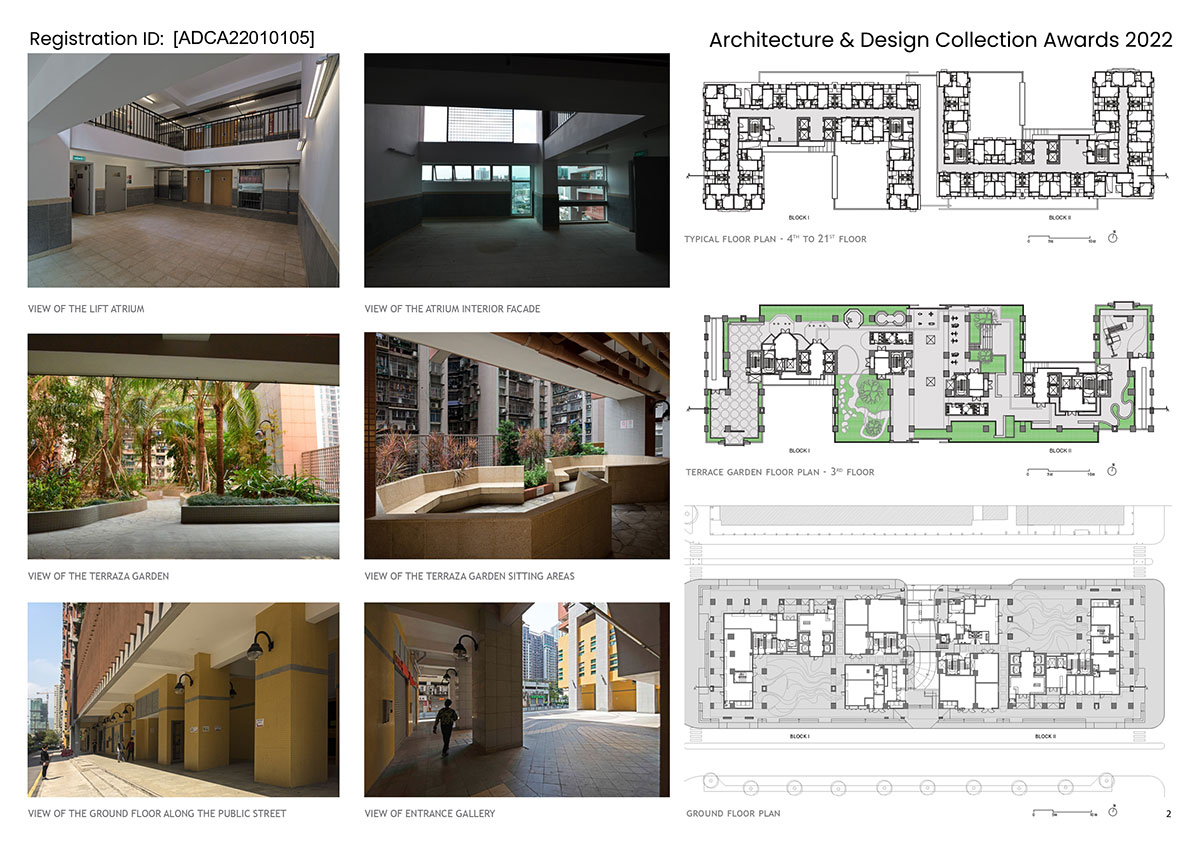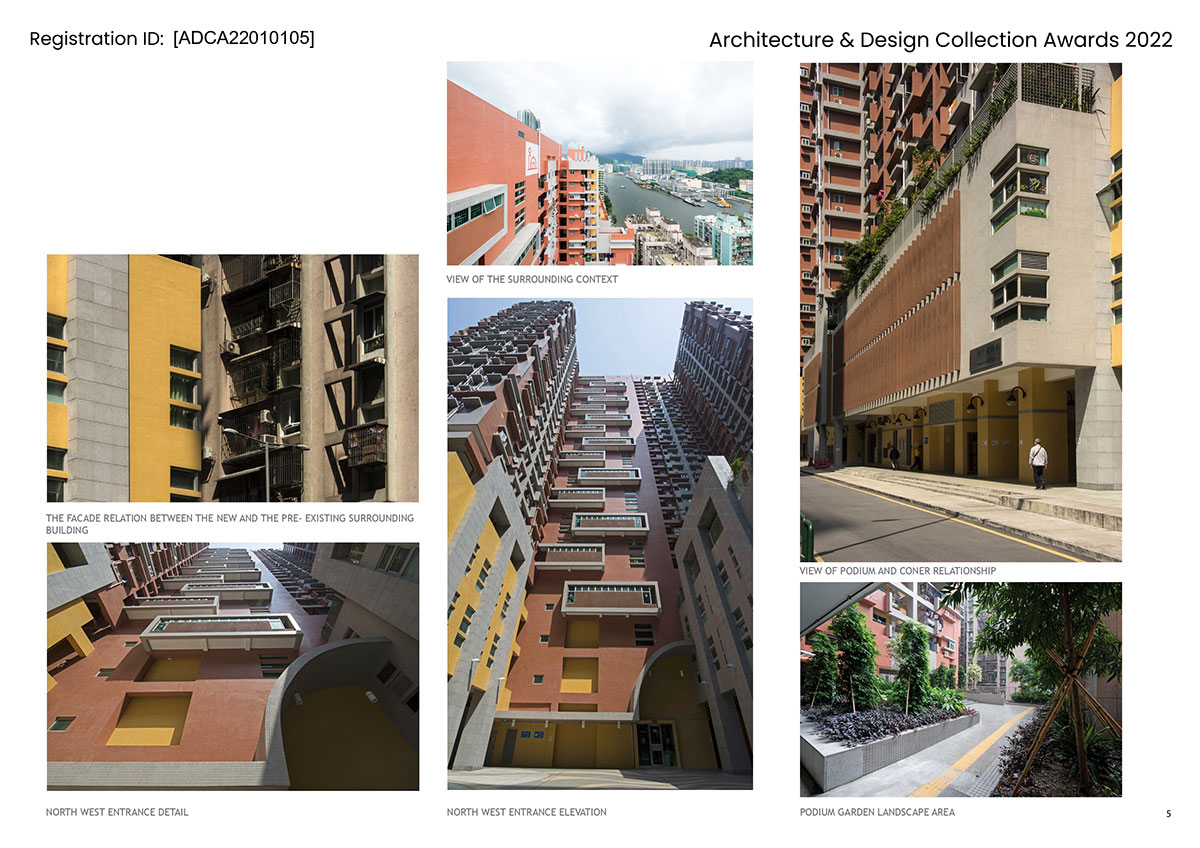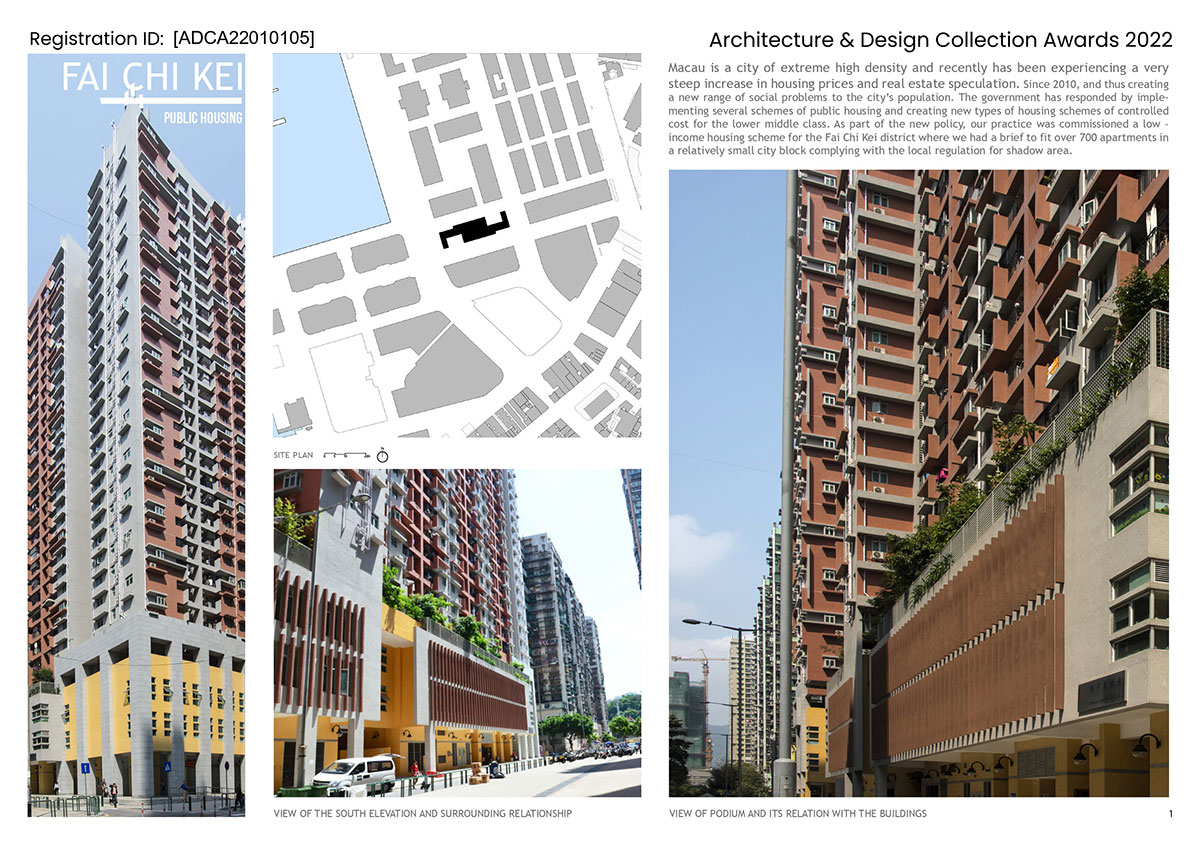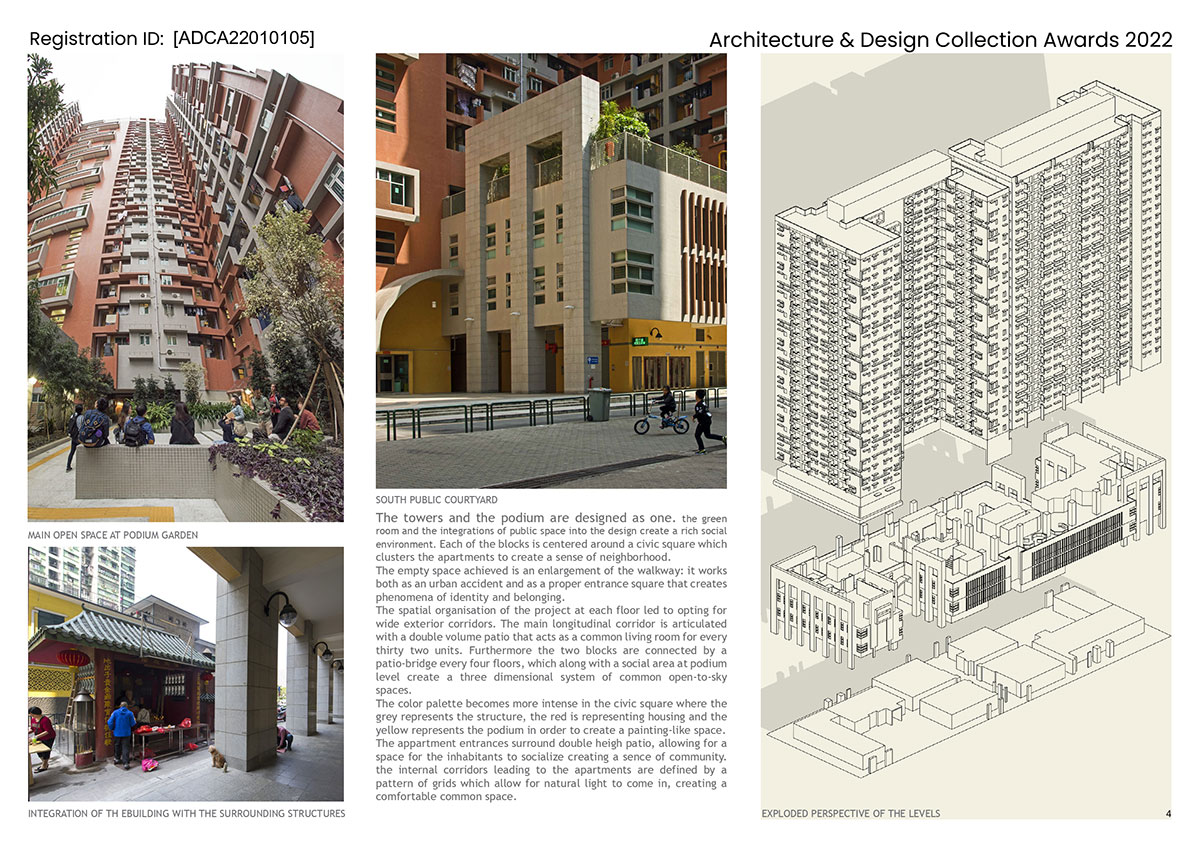Fai Chi Kei Public Housing

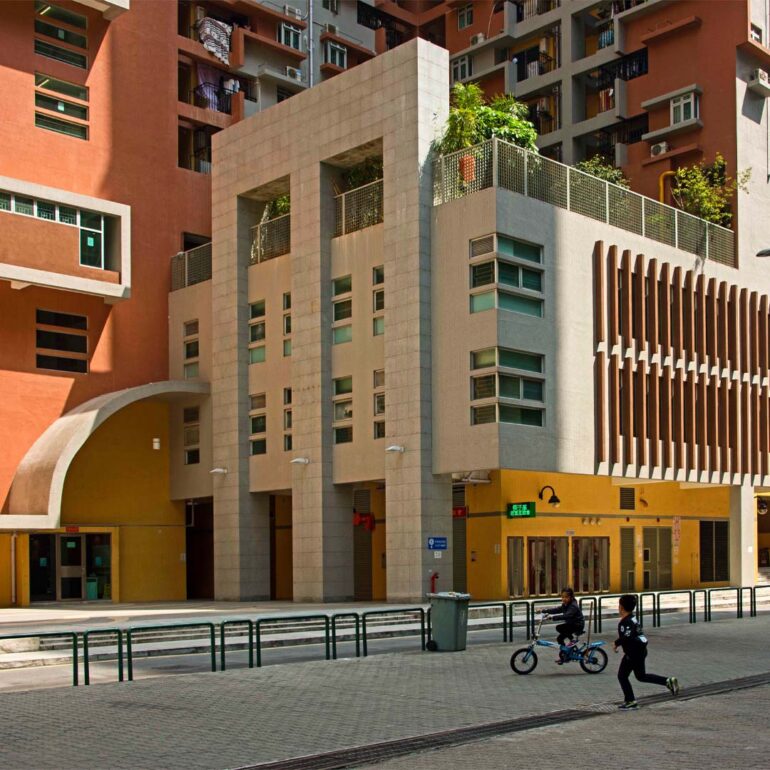
Architect / Designer:
Studio:
Country:
Macau is a city of high density and has been experiencing a steep increase in housing prices and real estate speculation. Since 2010, and thus creating a new range of social problems to the city’s population. The government has responded by implementing several schemes of public housing and creating new types of housing schemes of controlled cost for the lower middle class. As part of the new policy, our practice was commissioned a low – income housing scheme for the Fai Chi Kei district where we had a brief to fit over 700 apartments in a relatively small city block complying with the local regulation for shadow area.
We began by questioning the common typology of podium and tower, widely in use both in Macau and Hong Kong. This typology usually occupies the whole of the plot with three levels of construction, reducing the public space to a minimal sidewalk. The urban footprint of the Fai Chi Kei Public Housing refuses this common scheme.
We believe that public space can be understood as an accident in the city creating phenomena of identity and belonging. We designed each of the two blocks around an open courtyard like a sudden enlargement of the walkway. These courtyards are then connected to a series of circulations – integrating the entrances to the housing, social facilities and shops – forming a web of movements at ground floor between the block and the surrounding road system, thus de-materializing the static form of the podium block.
The project explores various systems of stacking to generate social interaction between the different floors. The podium with social equipment is dissimulated inside the tower to allow the volumes to land elegantly on the ground. The balconies of the apartments are strategically located in the corners to allow for open views from the living rooms towards the streets.
The towers and the podium are designed as one. the green room and the integrations of public space into the design create a rich social environment. Each of the blocks is centered around a civic square which clusters the apartments to create a sense of neighborhood.
The spatial organization of the project at each floor led to wide exterior corridors. The main longitudinal corridor is articulated with a double volume patio that acts as a common living room for every thirty two units. Furthermore the two blocks are connected by a patio-bridge every four floors, which along with a social area at podium level create a three dimensional system of common open-to-sky spaces.
The color palette becomes more intense in the civic square where the grey represents the structure, the red is representing housing and the yellow represents the podium in order to create a painting-like space.
The apartment entrances surround double height patio, allowing for a space for the inhabitants to socialize creating a sense of community. The internal corridors leading to the apartments are defined by a pattern of grids allowing natural light to come in, creating a comfortable common space.


